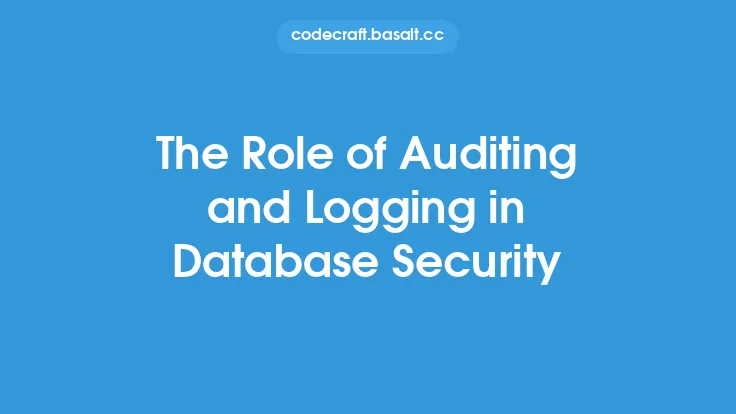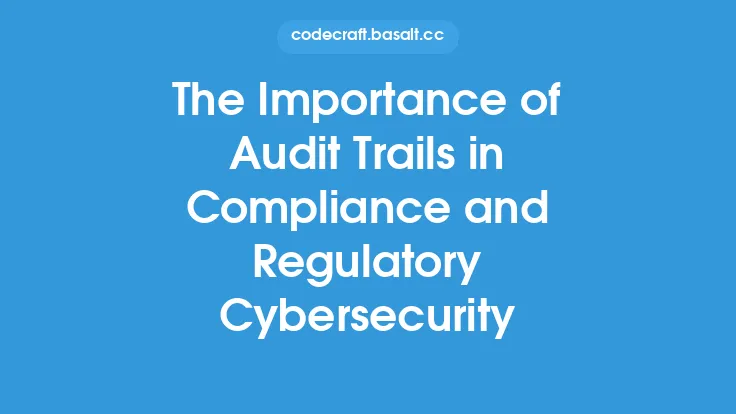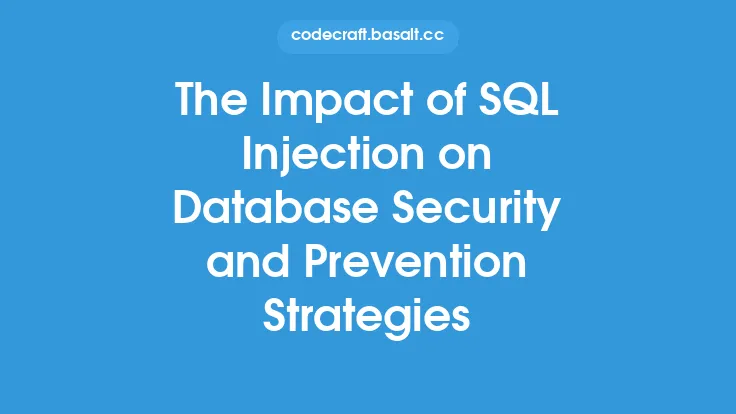Access control is a critical component of database security, as it ensures that only authorized users have access to sensitive data and can perform specific actions within the database. In today's digital age, databases are the backbone of most organizations, storing vast amounts of sensitive information, including customer data, financial records, and confidential business information. As such, it is essential to implement robust access control measures to prevent unauthorized access, data breaches, and other security threats.
What is Access Control in Database Security?
Access control in database security refers to the process of granting or denying access to database resources, such as data, tables, and stored procedures, based on user identity, role, or privilege. It involves setting up rules, policies, and procedures to control who can access, modify, or delete data, as well as what actions they can perform within the database. Access control can be implemented at various levels, including network, database, and application levels.
Types of Access Control
There are several types of access control, including:
- Discretionary Access Control (DAC): This type of access control grants access to database resources based on user identity and ownership. Users can grant or deny access to other users, and access control is based on user discretion.
- Mandatory Access Control (MAC): This type of access control grants access to database resources based on a set of rules and policies that are predefined by the system administrator. Access control is based on the sensitivity level of the data and the clearance level of the user.
- Role-Based Access Control (RBAC): This type of access control grants access to database resources based on user roles and responsibilities. Users are assigned to roles, and each role has a set of privileges and permissions associated with it.
- Attribute-Based Access Control (ABAC): This type of access control grants access to database resources based on a set of attributes, such as user identity, role, and environment.
Access Control Models
Access control models are used to implement access control in databases. Some common access control models include:
- Bell-LaPadula Model: This model is based on the concept of confidentiality and ensures that users can only access data that is classified at or below their clearance level.
- Biba Model: This model is based on the concept of integrity and ensures that users can only access data that is classified at or above their clearance level.
- Clark-Wilson Model: This model is based on the concept of integrity and ensures that users can only access data that is classified at or above their clearance level, and that data is only modified by authorized users.
Access Control Mechanisms
Access control mechanisms are used to enforce access control policies and rules. Some common access control mechanisms include:
- Authentication: This mechanism verifies the identity of users and ensures that only authorized users have access to the database.
- Authorization: This mechanism grants or denies access to database resources based on user identity, role, or privilege.
- Access Control Lists (ACLs): This mechanism grants or denies access to database resources based on a list of users, groups, or roles that have been granted access.
- Row-Level Security (RLS): This mechanism grants or denies access to specific rows of data within a table based on user identity, role, or privilege.
Benefits of Access Control
Access control provides several benefits, including:
- Improved Security: Access control ensures that sensitive data is protected from unauthorized access, modification, or deletion.
- Compliance: Access control helps organizations comply with regulatory requirements, such as HIPAA, PCI-DSS, and GDPR.
- Data Integrity: Access control ensures that data is only modified by authorized users, reducing the risk of data corruption or tampering.
- Audit Trails: Access control provides audit trails, which can be used to track user activity and detect security breaches.
Best Practices for Implementing Access Control
To implement access control effectively, organizations should follow best practices, including:
- Implementing Least Privilege: Grant users only the privileges and permissions necessary to perform their jobs.
- Using Strong Authentication: Use strong authentication mechanisms, such as multi-factor authentication, to verify user identity.
- Regularly Reviewing Access Control: Regularly review access control policies and rules to ensure they are up-to-date and effective.
- Providing Training: Provide training to users on access control policies and procedures to ensure they understand their roles and responsibilities.
Common Access Control Challenges
Organizations may face several challenges when implementing access control, including:
- Complexity: Access control can be complex to implement, especially in large, distributed databases.
- Scalability: Access control mechanisms may not scale well, especially in high-traffic databases.
- Performance: Access control mechanisms can impact database performance, especially if they are not optimized.
- User Management: Managing user identities, roles, and privileges can be time-consuming and error-prone.
Conclusion
Access control is a critical component of database security, and its importance cannot be overstated. By implementing robust access control measures, organizations can protect sensitive data, prevent unauthorized access, and ensure compliance with regulatory requirements. While access control can be complex to implement, following best practices and using the right access control mechanisms can help organizations overcome common challenges and ensure the security and integrity of their databases.





